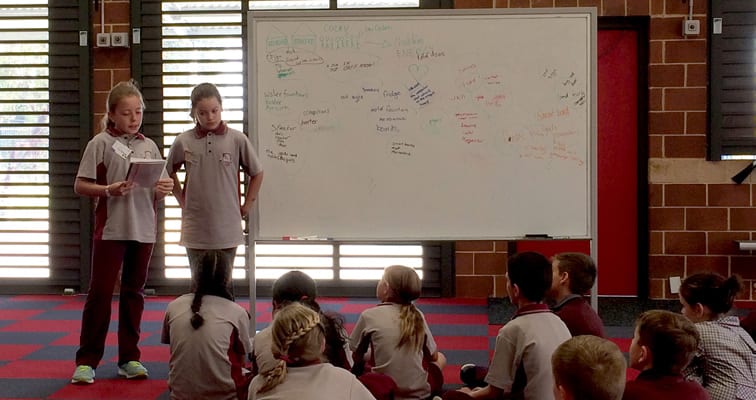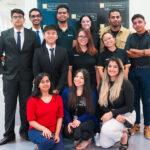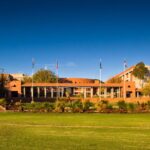“Make tomorrow better”. It has been a central premise at Curtin University for many years – inspiring students and researchers to make a difference to the world around them. Curtin entrepreneurs are taking the challenge one step further, working with schools so younger generations can start making tomorrow better, even before they get to university.
Academic and entrepreneur Dr Vanessa Rauland from the Curtin University Sustainable Policy Institute is passionate about helping schools reduce their carbon footprint. After helping South Fremantle Senior High School to become Australia’s first certified carbon-neutral school (and save over $240K in utility bills since 2007), she and colleague Dr Sam Hall established a company, SimplyCarbon, to assist more schools and businesses in reducing their carbon emissions.
“There are heaps of sustainability programs around to help businesses and individuals reduce their carbon footprint”, explains Rauland, “but there are far fewer that target schools and specifically focus on energy efficiency or carbon reduction. One of the more well-known programs is the Australian Sustainable Schools Initiative, but it covers everything from worm farms to biodiversity. We wanted to show schools that reducing your carbon footprint can be done in a systematic, targeted, and measurable way. So we chose to focus on areas we can easily quantify: electricity, gas, water and waste”.
But why schools? It turns out there are lots of compelling reasons. Many school buildings and facilities are ageing, and can potentially realise large improvements in sustainability and operating efficiency. Reduced utility bills mean more money available for education. “The most important reason though”, says Rauland, “is that the impact is so much larger than just the school’s carbon footprint. Schools can educate and empower the next generation about sustainable resource management and low carbon living, using the facilities themselves for hands-on learning”. And with a pivotal role in the development of local communities, schools can influence carbon footprints well beyond their physical boundaries.
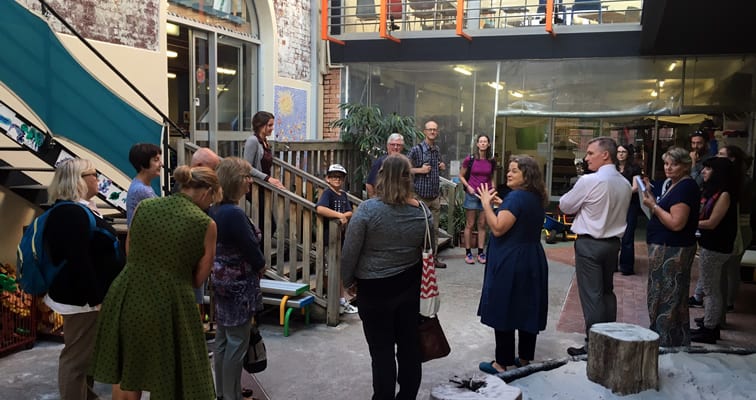
In 2014 Rauland and colleagues, supported by funding from Curtin University and the CRC for Low Carbon Living, reviewed existing low carbon school programs and initiatives across Australia. This research informed the design of their Low Carbon Schools pilot program, which was launched in 2016 to test how effectively they could help 15 schools reduce their carbon emissions. As part of the two-year pilot, Curtin PhD candidate Portia Odell is investigating how schools can influence community awareness, knowledge and action on climate change and low carbon living.
The pilot began with five interactive workshops over six months, giving the participants a better understanding of low carbon opportunities. By working through their utility bills to calculate their emission baseline, participants gained an understanding of their energy consumption, utility expenses, and could identify areas for potential savings. By then comparing consumption patterns and costs between schools, participants started questioning the differences, which often uncovered further areas for improvement.
Industry experts also presented on lighting, heating, water and waste management strategies. Armed with an overload of information, opportunities and contacts, the participants each created an Emission Reduction Plan tailored for their school. These plans ranked initiatives ranging from behavioural change to technical solutions, considering both ease and expense of implementation.
The remaining 12 months of the pilot is all about implementation. Facilitated monthly meetings rotate between the schools, giving the participants an opportunity to showcase their low carbon initiatives, share experiences and brainstorm solutions to implementation challenges together. Regular communication during the implementation phase has also raised the possibility of approaching suppliers for bulk discounts on purchases: from motion sensors for lights to flow restriction valves for taps.
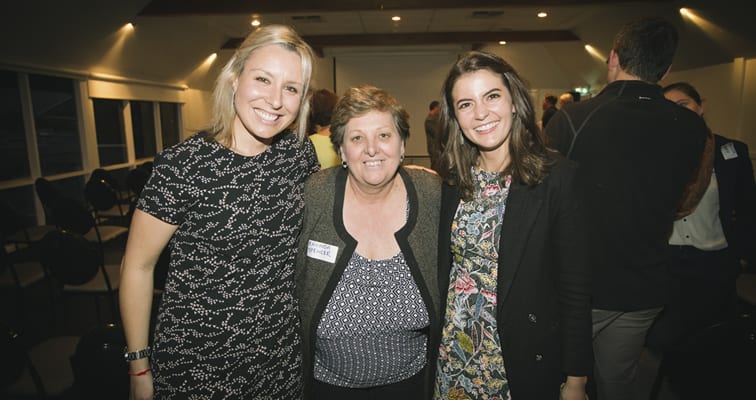
“The monthly meetings have turned out to be the most useful part”, admits Rauland. “It keeps the schools accountable and moving forward, but the dialogue between them is incredibly valuable.”
Between meetings, the participants are supported through a collaborative online platform, where they can ask questions from sustainability professionals, communicate openly across the 15 schools, and access all the resources provided by the program.
Rauland notes “the pilot schools are already seeing impressive reductions in resource consumption, carbon emissions and utility costs, and are providing great educational opportunities for their students”. As a result, Rauland and her team’s focus is now on making the program scalable, web-enabling the tools and preparing for a national release of the Low Carbon Schools Program in 2018.
